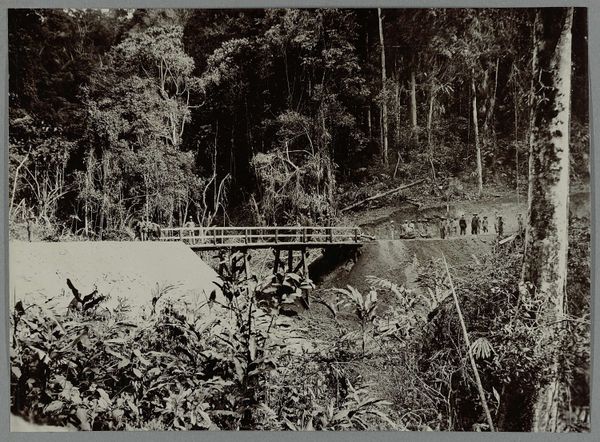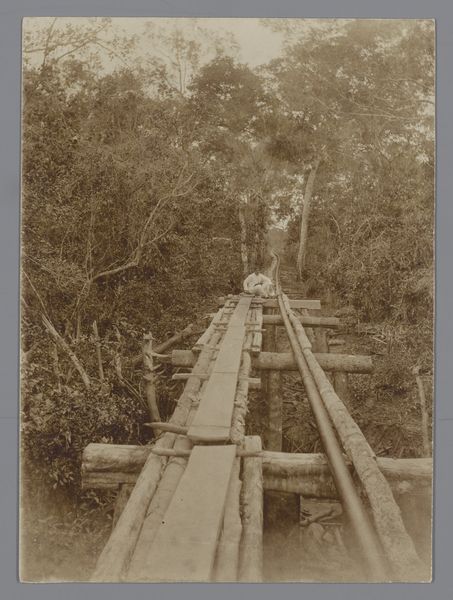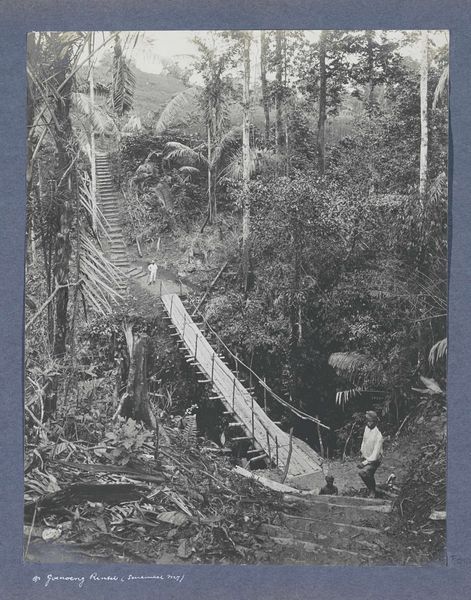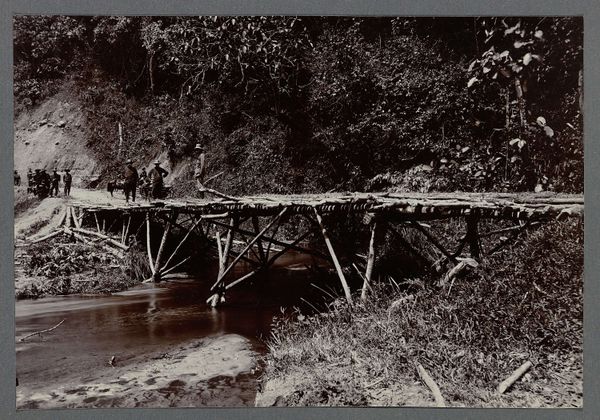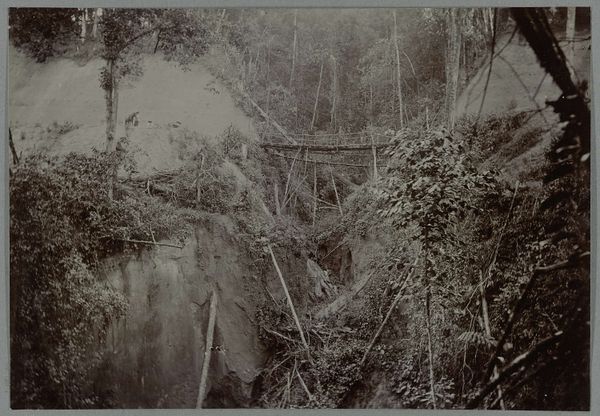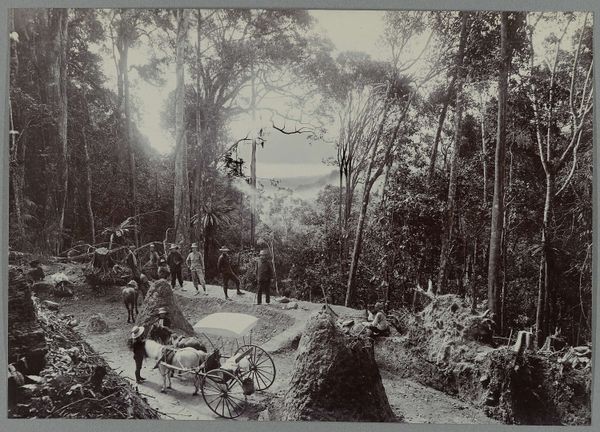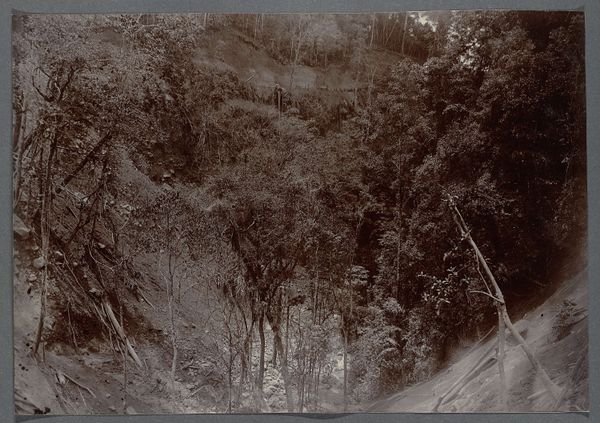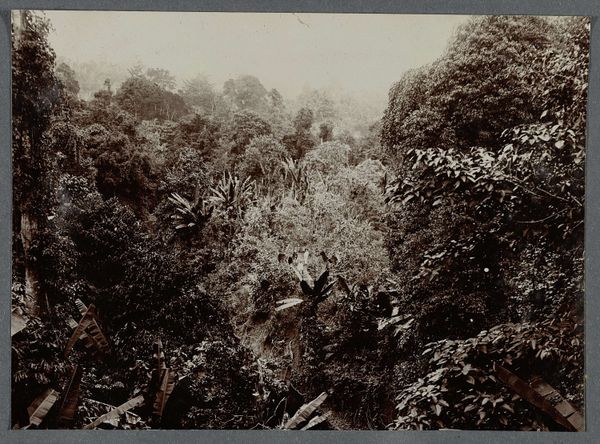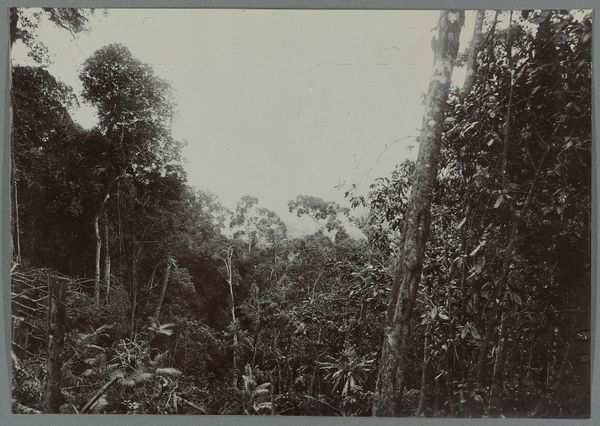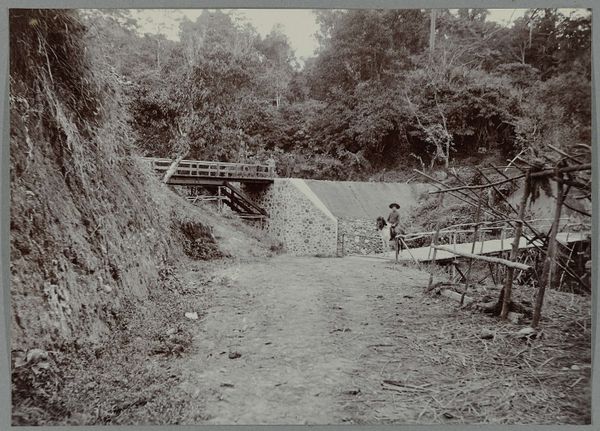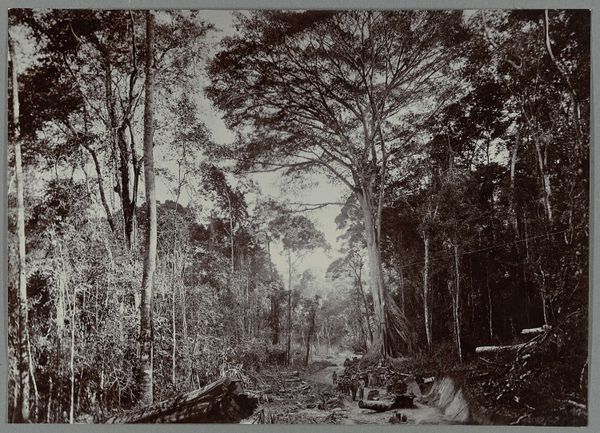
Leidinggevenden van plantage(s) en honden in de velden van tabaksplantage Boeloe Tjina op Sumatra c. 1900 - 1920
0:00
0:00
photography, gelatin-silver-print
#
landscape
#
photography
#
orientalism
#
gelatin-silver-print
#
mixed medium
#
mixed media
Dimensions: height 150 mm, width 200 mm
Copyright: Rijks Museum: Open Domain
Editor: This gelatin-silver print, titled 'Leidinggevenden van plantage(s) en honden in de velden van tabaksplantage Boeloe Tjina op Sumatra,' dates from around 1900-1920. It depicts plantation managers with dogs in what looks like a Sumatran tobacco field. It’s a stark, black and white image, the rough wooden bridge cutting a diagonal through the dense foliage. What do you make of it? Curator: This photograph speaks volumes about the socio-political landscape of the time. The crisp attire of the managers, juxtaposed against the raw, almost precarious bridge and the vast plantation, visually emphasizes the power dynamics at play. It invites questions about colonial exploitation and the control over land and labor. Editor: The “Orientalist” tag feels very relevant here. How do you see that playing out? Curator: Precisely. Orientalism in art often involves a Western gaze upon Eastern subjects, frequently exoticizing orOthering' them. Here, while ostensibly a documentary image, there's a subtle staging. The managers are elevated, literally and figuratively, above the land, reinforcing their dominance. The framing of the ‘untamed’ landscape in contrast to their ordered presence creates a visual hierarchy. What’s absent is also telling; where are the workers, the backbone of this industry? Editor: So the power isn't just in what’s shown, but also in what's intentionally omitted? Curator: Absolutely. The choices made – the angle, the subjects, the very composition – construct a narrative, a carefully curated perspective on colonial life in Sumatra. Consider how this image might have been viewed by audiences back in Europe, reinforcing certain ideas about the East. It acts almost as propaganda, downplaying any tensions inherent in the colonial system. Editor: It’s fascinating to see how a seemingly straightforward photograph can be unpacked to reveal so much about the era's power structures and cultural biases. I didn’t realize how much these historical forces were subtly embedded within an image like this. Curator: Indeed. It’s a reminder that art, in all its forms, is rarely neutral. It actively participates in shaping and reflecting the society from which it emerges.
Comments
No comments
Be the first to comment and join the conversation on the ultimate creative platform.
